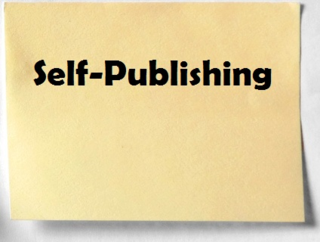How to create your book's table of contents
Though the  table of contents is one of the first pages readers will see, it’s one of the last you’ll actually complete. Because it must perfectly match the names of your various sections and chapters, as well as have the correct page numbers (if doing a print book anyway), it is always in flux as you write and format the book.
table of contents is one of the first pages readers will see, it’s one of the last you’ll actually complete. Because it must perfectly match the names of your various sections and chapters, as well as have the correct page numbers (if doing a print book anyway), it is always in flux as you write and format the book.
The table of contents should list those portions of your book:
g Foreword, preface and introduction – Sometimes the author of one or more of these special sections also is given, especially if the writer is of note.
g The name and number of any “part” or “section” – For example, you may use “Part I: Plotting Your Novel” or “Section II: Creating a Setting for Your Novel”.
g Chapter titles – Give numbers as well if you use them.
g Subsections within chapters – Often chapters are divided into sections; listing them can help give readers a good sense of what is in that chapter.
g Tables, charts, maps and illustrations – Especially in nonfiction books, a separate list of where these graphic elements appear is included.
g Appendix, glossary, index – Give the names and page numbers for any of this back material appearing in your book.
With a printed book, use different fonts and point sizes to help differentiate these elements in your table of contents. For example, your table of contents might look like this:
Preface
Introduction
Part 1: Plotting Your Novel
Chapter 1: Conflict
Man vs. Nature
Man vs. Man
Man vs. Society
Man vs. God(s)
Man vs. Himself
Chapter 2: Parts of a Plot
Inciting Incident
Rising Action
Climax
Falling Action
Denouement
Index
When constructing the table of contents, the trick is to ensure you leave enough space for it so you can start placing page numbers. If you don’t leave enough space, adding to the table of contents later on might add a page to your book and throw off your page counts. Create the table of contents only after you’ve written the book’s text and are fairly confident that it won’t change beyond correcting typos. Add the page numbers only after you’ve placed them on the formatted page.
Which brings us to another problem: Getting page numbers to line up. If formatting in Word, it is impossible to do by hand or by using the align functions, unless you’re using a fixed-width font like Courier (a typeface that looks tacky, by the way). You’ll instead need to use tabs. Sometimes a table of contents template will work as well.
If making an ebook, no page numbers are needed. Instead, you should create links to those section or chapter headers that you’ve listed.
Need an editor? Having your book, business document or academic paper proofread or edited before submitting it can prove invaluable. In an economic climate where you face heavy competition, your writing needs a second eye to give you the edge. I can provide that second eye.
Related articles
 Decide what your book's website will look like
Decide what your book's website will look like How your text should appear in a formatted book
How your text should appear in a formatted book Offer readers a sample chapter page on website
Offer readers a sample chapter page on website



